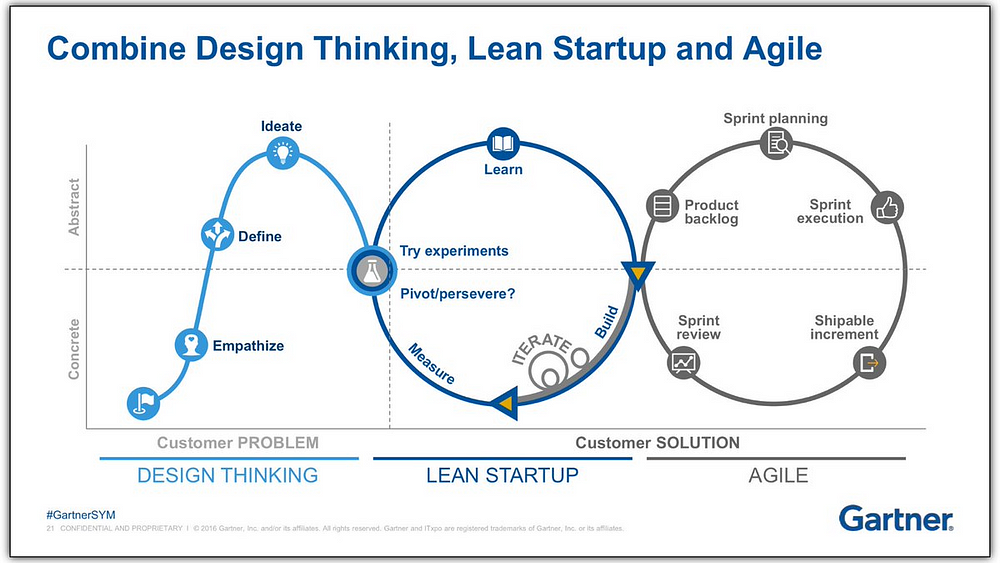Design Thinking, Lean Startup and Agile
What is the difference between Design Thinking, Lean Startup and Agile?
I often get asked what the difference is between those terms. “Is lean startup opposite of design thinking? oh no, maybe it is the same?” and “Ah ok, so you mean agile?” or “I think Agile is a better word for it”. Those are some of the comments I get whenever I talk about one of terms above.
I will hereby try to clarify what these terms relate to, and how they can be integrated with each other.
Design thinking
Design
thinking is an iterative process in which we thrive to understand the
user’s pain, challenge assumptions, redefine problems, in order to
create new strategies and solutions.
Opposed to “Brainstorming”, Design thinking promotes “Painstorming”, in order to fully understand the user’s pain.
The usual Design thinking phases are the following:
- Empathize with your users
- Define your users’ needs, their problem, and your insights
- Ideate by challenging assumptions and creating ideas for innovative solutions
- Prototype to start creating solutions
- Test solutions
According to Tim Brown, CEO of IDEO: “Design
thinking is a human-centered approach to innovation that draws from the
designer’s toolkit to integrate the needs of people, the possibilities
of technology, and the requirements for business success.”
Lean Startup
“Lean
startup is a methodology for developing businesses and products, which
aims to shorten product development cycles and rapidly discover if a
proposed business model is viable; this is achieved by adopting a
combination of business-hypothesis-driven experimentation, iterative
product releases, and validated learning.” — Wikipedia
Globally,
90% of startups fail (Forbes) and the number one reason is market
failure: “They make products no one wants.” (Fortune).
The
lean startup methodology was born in Silicon Valley in the 90s, but the
use of the word “lean” has its roots to Toyota’s lean production
system. Toyota’s lean manufacturing system was used to build things
efficiently, yet it doesn’t tell what should be built.
Using
Eric Ries words: “The Lean Startup provides a scientific approach to
creating and managing startups and get a desired product to customers’
hands faster. The Lean
Startup method teaches you how to drive a startup-how to steer, when to
turn, and when to persevere-and grow a business with maximum
acceleration. It is a principled approach to new product development.”
Agile
Agile is a way of working, based on an iterative development, incremental delivery and ongoing reassessment of a product.
As mostly used in software development, it is based on a clear idea of the product’s concept and its market.
Contrary to the idea of focusing on a set of features to be developed, agile focuses on the high value features first.
Agile
is all about producing tangible, working results after each iteration.
According to the 12 principles of the Agile Manifesto, “Working software
is the primary measure of progress.” Deliver a rough draft, then revise
based on your editor’s suggestions. Never deliver the entire piece all
at once!
Design Thinking, Lean Startup and Agile can be combined as shown in the picture below.
- Empathize, Define and Ideate through Design Thinking
- Turn ideas into Business models following the lean startup
- Build and deliver the product incrementally and faster through Agile processes.

Why combining?
If
90% of startups fail because they produce products nobody wants,
combining those methodology drastically reduce this risk of failing.
As
you probably noticed, all the three methodologies take the final user
into account, through direct feedback. This feedback loop makes sure
that no product is created without a purpose to the final user. This is
clearly against the old way of planning on paper and then starting
building a real product based on a list of pre-decided features.
Comments
Post a Comment